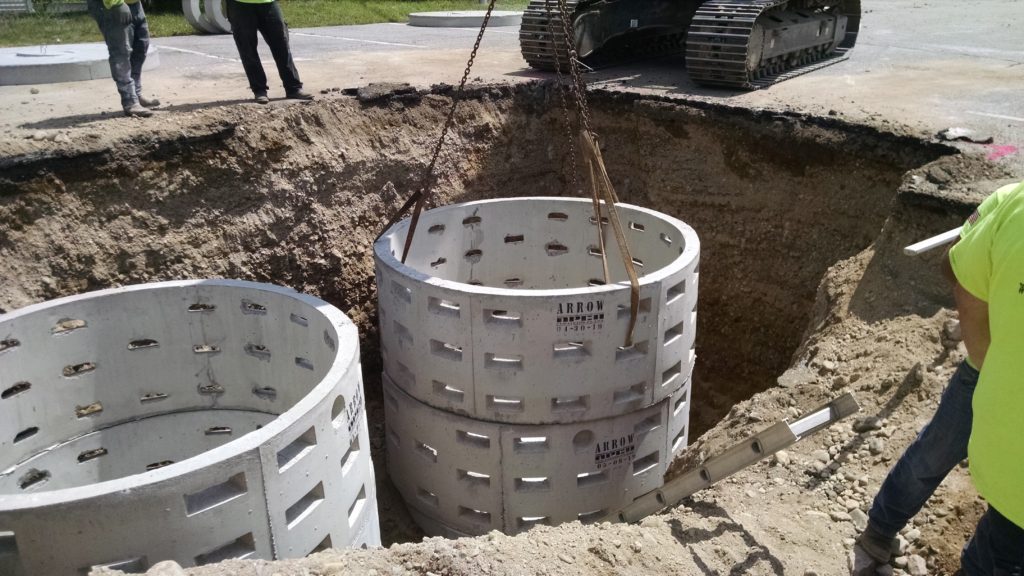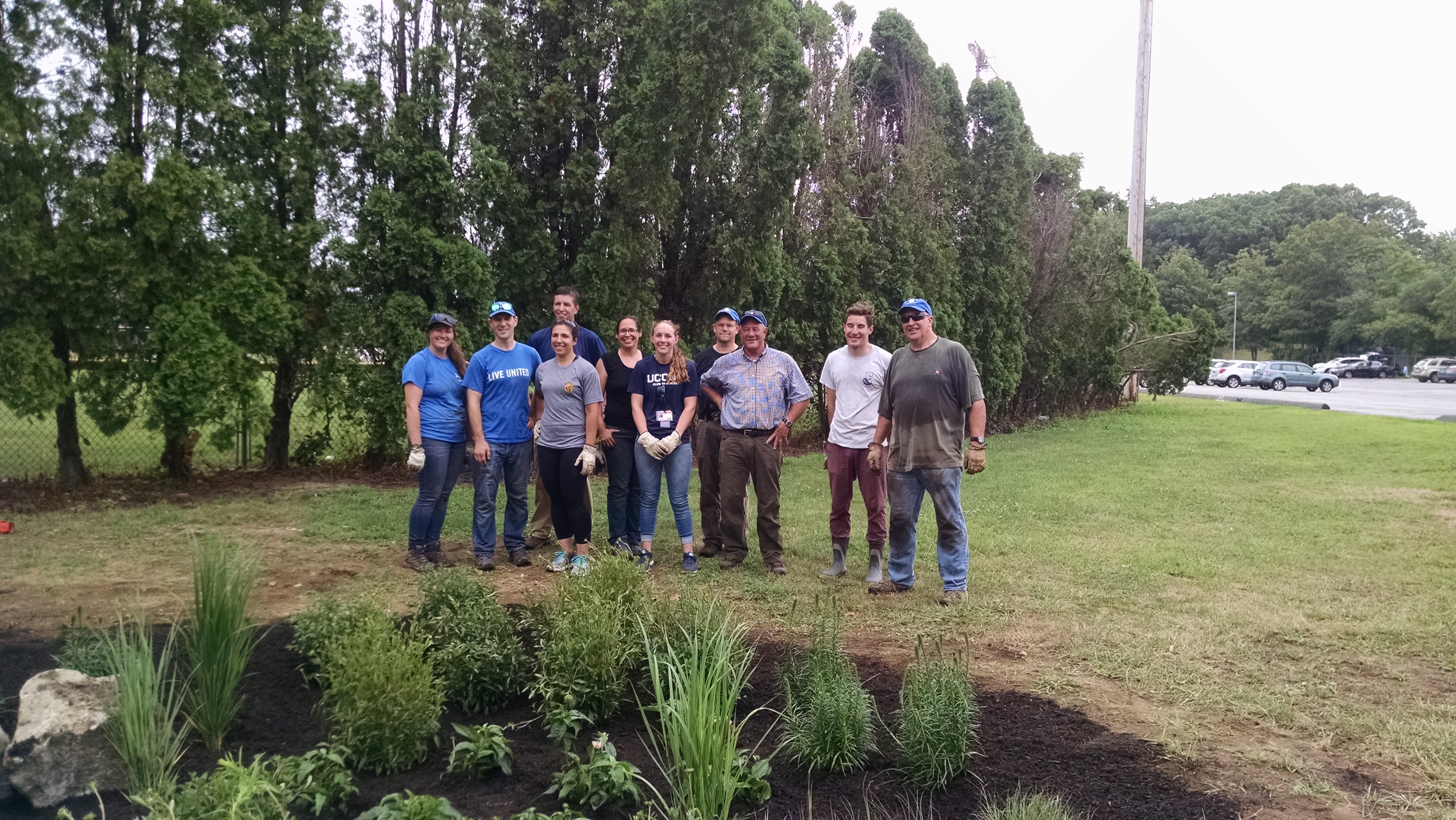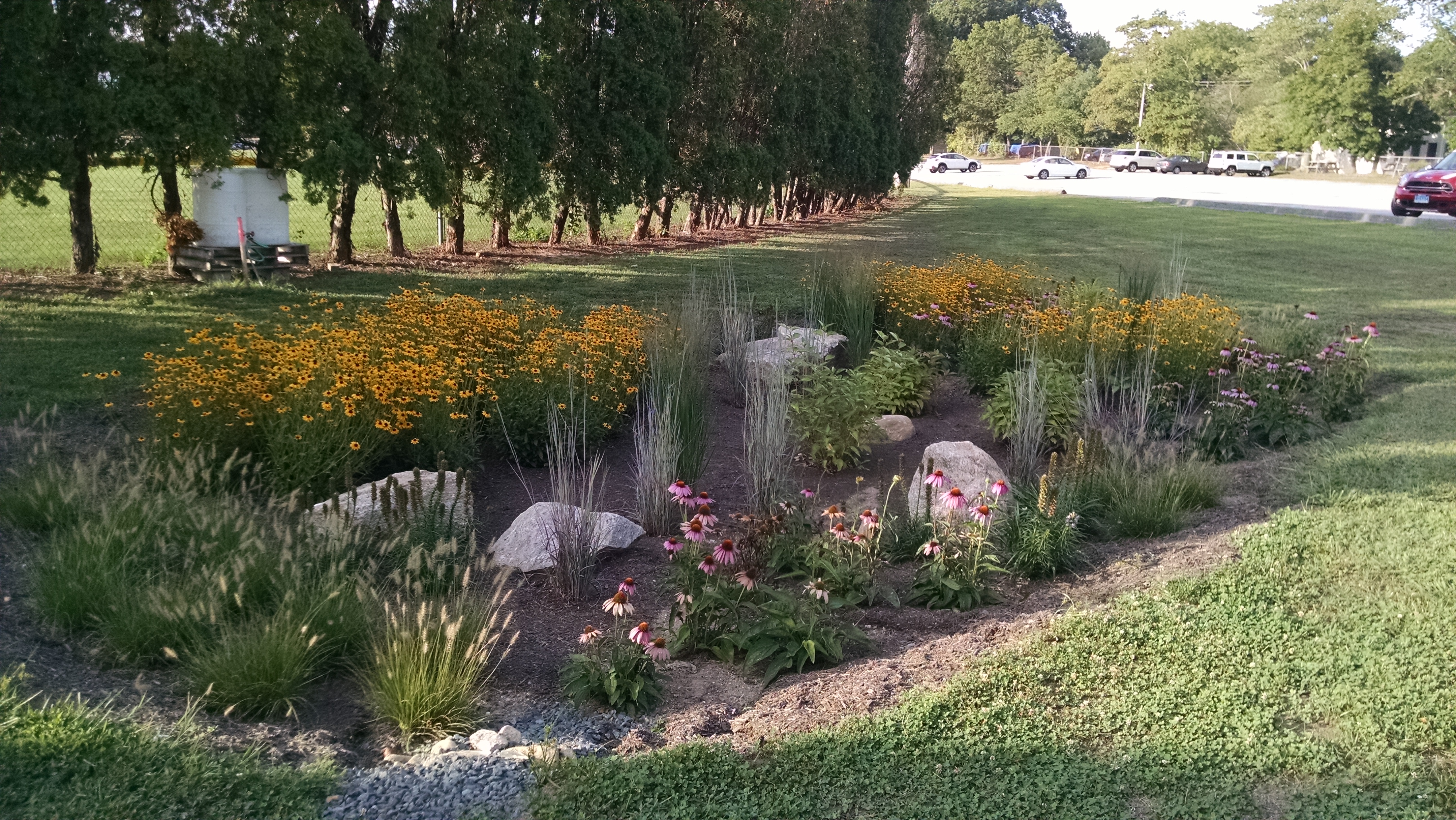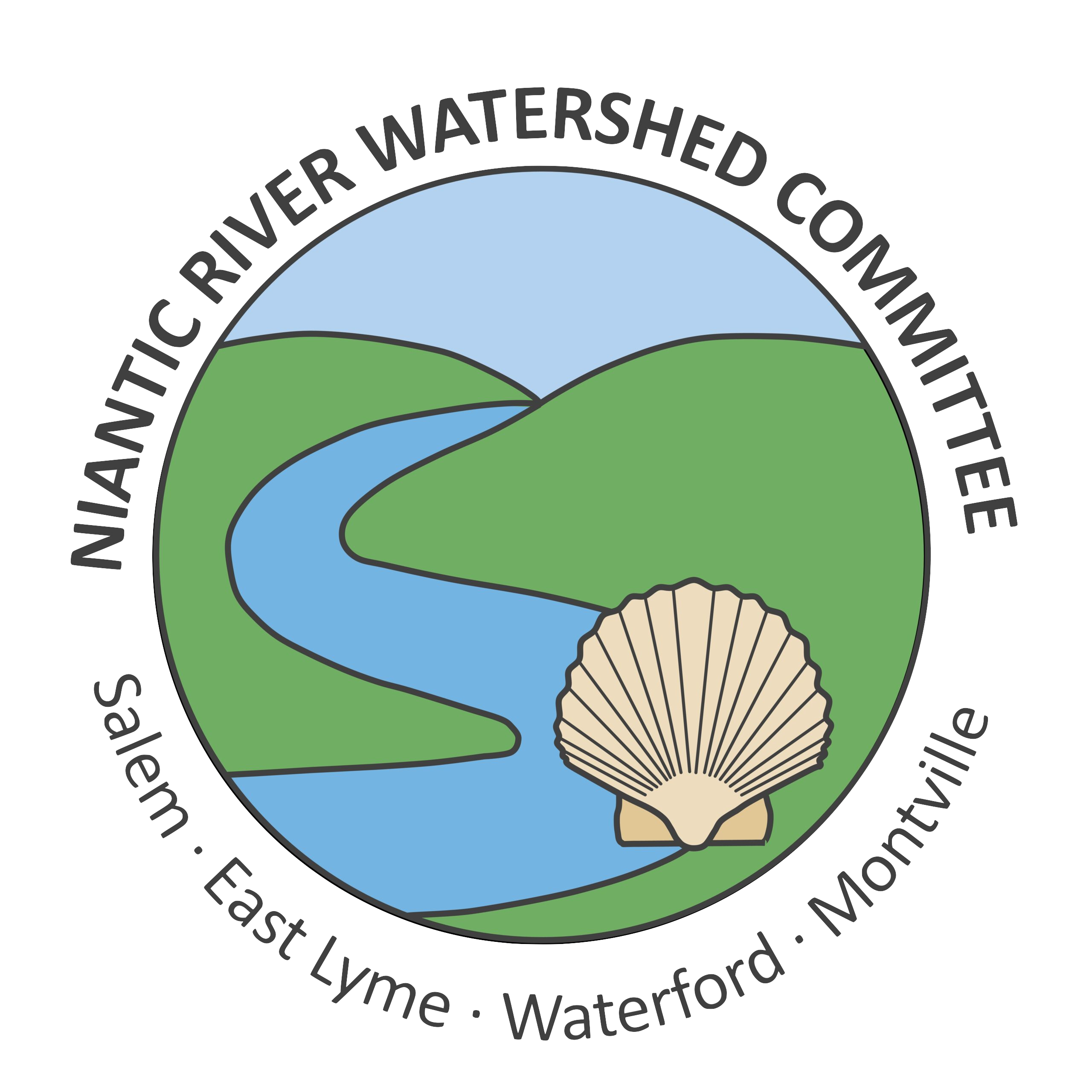Latimer Brook Stormwater Infiltration Project
The Eastern Connecticut Conservation District received funding to install stormwater infiltrators at the East Lyme High School. In partnership with NRWC, the East Lyme School Board and the Department of Public Works, ECCD installed 3 pairs of drywells under the student parking lot at the high school. Previously, stormwater from the parking lot was collected by the on-site storm drain network and discharged to Latimer Brook. The drywells will collect over 1 million gallons of stormwater per year from the 1.4-acre parking lot and allow it to soak into deep sand layers (called stratified drift) under the high school property. The drywells will replace three traditional storm drains and will be connected to the existing storm drain network so that during very large storms stormwater will be safely conveyed away from the parking lot. This project was conducted in the summer of 2019, and was funded in part by CT DEEP through a Clean Water Act Section 319 Nonpoint Source Program grant.

To learn more about the installation of the drywells and the rain garden, click here for a short Powerpoint presentation.
East Lyme High School Bio-retention Rain Garden
In conjunction with the parking lot infiltration project, the Niantic River Watershed Committee, East Lyme School Board and Department of Public Works, installed a bio-retention rain garden at the East Lyme High School in the summer of 2017. This bio-retention rain garden will capture and treat roughly 136,000 gallons of stormwater run-off annually from a driveway and surrounding parking area. Presently, stormwater runoff from the site flows untreated into the storm drain system and is discharged to Latimer Brook. This stormwater runoff may contain fertilizer, bacteria, trash, sediment, heavy metals, oil, gas and other automotive products that will pollute Latimer Brook and ultimately end up in Long Island Sound. This project is funded in part by a Dominion Foundation Environmental Stewardship grant.


For more information about bio-retention, visit CT NEMO’s Rain Garden page at http://nemo.uconn.edu/raingardens/.
